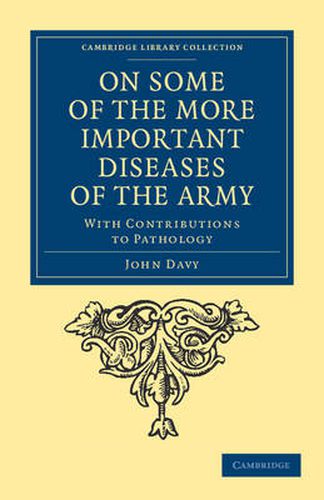Readings Newsletter
Become a Readings Member to make your shopping experience even easier.
Sign in or sign up for free!
You’re not far away from qualifying for FREE standard shipping within Australia
You’ve qualified for FREE standard shipping within Australia
The cart is loading…






Born in Cornwall, John Davy (1790-1868) physiologist and anatomist, and the younger brother of the distinguished chemist Sir Humphry Davy (1778-1829), was one of the most prolific medical experts of his day. After taking a medical degree from Edinburgh in 1814 he became an army surgeon. He later became a hospital inspector and spent time living in overseas territories including India, Sri Lanka, and Barbados. First published in 1862, Davy’s book discusses the prominence of fever, dysentery, cholera, liver disease, pneumonia, and other diseases common to the army, estimating that 45% of deaths in the British army serving abroad were caused by disease rather than by conflict. Davy also records his observations on putrefaction of bodies, particularly the vital organs, emphasising the need to determine the normal condition of human organs so that abnormal, diseased organs can be easily identified.
$9.00 standard shipping within Australia
FREE standard shipping within Australia for orders over $100.00
Express & International shipping calculated at checkout
Born in Cornwall, John Davy (1790-1868) physiologist and anatomist, and the younger brother of the distinguished chemist Sir Humphry Davy (1778-1829), was one of the most prolific medical experts of his day. After taking a medical degree from Edinburgh in 1814 he became an army surgeon. He later became a hospital inspector and spent time living in overseas territories including India, Sri Lanka, and Barbados. First published in 1862, Davy’s book discusses the prominence of fever, dysentery, cholera, liver disease, pneumonia, and other diseases common to the army, estimating that 45% of deaths in the British army serving abroad were caused by disease rather than by conflict. Davy also records his observations on putrefaction of bodies, particularly the vital organs, emphasising the need to determine the normal condition of human organs so that abnormal, diseased organs can be easily identified.